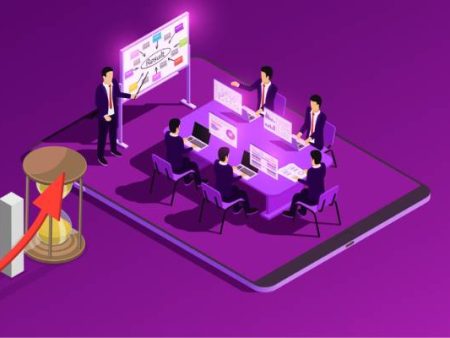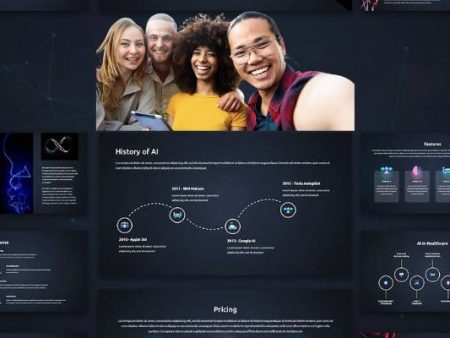If you’ve ever sat in front of a blank PowerPoint slide at 2 a.m., you’ll understand the frustration. The blinking cursor mocks you. Deadlines loom.
You’ve got all the ideas in your head, but translating them into neat slides feels like an uphill battle. Honestly, I’ve been there more times than I’d like to admit.
But something has shifted recently. A new class of tools has emerged that promise to take presentations from boring to brilliant: in minutes.
They don’t just throw pretty templates at you—they write content, design slides, suggest visuals, and even tailor the tone for your audience. The buzzword? AI presentation generation.
Now, you might be wondering: is this just another fleeting tech fad, or are we actually witnessing a genuine disruption of the decades-long PowerPoint monopoly? Let’s break it down.
The Rise of AI Presentation Generation
We’re no longer talking about clunky template libraries or static design add-ons. With the rise of AI, presentation generators like Beautiful.ai, Gamma, Tome, Canva’s Magic Design, and even Microsoft Copilot have changed the game.
These platforms use natural language processing (NLP) and machine learning to analyze your prompt—say, “I need a pitch deck for a health tech startup targeting investors”—and churn out a ready-to-use deck within minutes.
And I don’t mean a rough skeleton; I’m talking about polished slides with suggested talking points, curated images, color schemes, even charts pulled from your data.
It’s not magic. It’s a combination of:
- Content engines trained on massive text datasets.
- Design models that understand visual hierarchy, typography, and branding.
- Image generation (think DALL·E or Stable Diffusion) for custom illustrations.
- Workflow automation that saves you hours of fiddling with layouts.
A Gartner report recently predicted that by 2026, 90% of corporate presentations will have at least some AI-generated components. If that’s anywhere close to true, PowerPoint as we know it is being quietly dismantled.
Why PowerPoint Alone Isn’t Enough Anymore
Let’s be honest: PowerPoint has been a loyal workhorse for over 30 years. But it’s also… dated. The classic complaints still stand:
- Too many slides end up looking like bullet-point cemeteries.
- Most users lack design training, so decks feel uninspired.
- Collaboration can be clunky in traditional desktop setups.
Audiences today expect more. They’ve sat through thousands of presentations. They crave clarity, storytelling, and visuals that stick. Traditional slides often fail to deliver that punch. AI, by contrast, has no patience for mediocrity—it optimizes for engagement by default.
And this isn’t just me being picky. A Prezi survey found that nearly 80% of professionals admit they lose focus during presentations. That statistic alone explains why AI-powered decks are catching on so fast: they cut through the noise.
10 Ways AI Saves Presenters Time (and Sanity)
I’ll cut to the chase: here are 10 ways AI saves you from presentation hell.
- Idea to outline in seconds: Just type your topic and goal.
- Instant design polish without hiring a designer.
- Slide-by-slide content generation tailored to tone (formal, persuasive, casual).
- Automated data visualization with smart charts and infographics.
- Consistent branding across fonts, colors, and layouts.
- On-the-fly edits: add a new slide by typing, “Insert competitor analysis.”
- Image sourcing (or generating custom visuals).
- Live collaboration with teammates in real time.
- Accessibility features like alt text and readability checks.
- Export flexibility across PowerPoint, Google Slides, or web-native formats.
That’s not convenience—it’s a fundamental shift in how presentations are made.
Are AI-Generated Presentations Killing Creativity?
Here’s the elephant in the room: are ai-generated presentations killing originality?
Some critics argue that relying on algorithms leads to cookie-cutter decks. If everyone uses the same AI, won’t everything start looking the same? I get that fear.
But in my experience, it’s not about replacement—it’s about amplification. AI does the grunt work (the boring layouts, the text drafts, the endless resizing of icons). That frees humans to focus on storytelling, strategy, and the emotional core of their message.
I’d even say AI is giving more room for creativity because you can experiment faster. Want to test three different storytelling angles? AI can whip them up in minutes. That’s creative freedom, not creative death.
Beyond the Boardroom: New Uses for AI Presentations
AI slides aren’t just for boardrooms and classrooms anymore. We’re seeing them pop up in surprising places:
- Startups pitching investors with slick decks created overnight.
- Teachers turning lesson plans into interactive slides.
- Nonprofits building campaign presentations with minimal resources.
- Content creators making social media carousels directly from AI decks.
In other words, presentation generation has crossed into mainstream communication. If emails and blogs were disrupted by AI writing assistants, slides are simply the next frontier.
Where AI Slides Excel (and Where They Stumble)
Let’s keep it real. AI presentation generation is powerful, but not perfect.
Strengths:
- Lightning speed.
- Surprisingly good baseline design.
- Tailored messaging based on audience.
Weaknesses:
- Sometimes generic phrasing that needs editing.
- Cultural nuance can be off.
- Complex data analysis isn’t always accurate.
Think of it this way: AI is the intern who drafts your slides overnight. You’re still the boss who needs to refine, fact-check, and inject personality.
The Human Touch That Still Matters
No matter how advanced AI gets, one thing it can’t replicate is authenticity. Audiences connect with stories, with vulnerability, with humor that comes from lived experience.
I’ve sat through AI-polished decks that looked gorgeous but felt hollow. And I’ve seen “ugly” homemade slides that had people on the edge of their seats because the speaker was genuine.
So yes, use AI. Let it help. But don’t forget: people come to hear you, not just your slides.
The Road Ahead: What’s Next for AI Presentations
Looking forward, we’re entering a new era of interactive, dynamic presentations. Imagine:
- Real-time AI adjusting your slides as you speak, based on audience reactions.
- Personalized decks for each stakeholder automatically generated before a meeting.
- Integrations with VR/AR to create immersive storytelling.
Some of this is already happening. Microsoft’s Copilot, for example, can auto-generate PowerPoint decks from Word docs or meeting transcripts (source). Tools like Tome allow audiences to interact with live data embedded in slides (source).
It feels inevitable: the humble slide deck is transforming into something more alive, more responsive, and more collaborative.
My Take: Why This Matters
I’ll be honest. I never loved making slides. It always felt like a tax on my time. But watching AI presentation generation evolve has changed how I feel. It’s not about replacing creativity—it’s about letting ideas shine without being bogged down by formatting.
When I see colleagues use AI to craft decks that would’ve taken weeks, I don’t see laziness. I see efficiency. I see the death of bad slideshows. And I see a future where more voices—teachers, activists, entrepreneurs—can share their ideas without being held back by design skills.
Will there be pitfalls? Of course. Overreliance could make us complacent. Generic decks will slip through. But overall, this disruption feels overdue. PowerPoint had its reign. Now it’s time for something smarter.
Final Thoughts
AI presentation generation is not just a flashy trend—it’s a redefinition of how we communicate ideas visually. From startups chasing funding to teachers reimagining classrooms, this shift is too big to ignore.
The question isn’t whether it will replace PowerPoint. It’s whether we’ll embrace this new reality thoughtfully, keeping the human spark alive while letting machines handle the heavy lifting.
Because if AI can finally save us from death-by-PowerPoint, maybe that’s a revolution worth welcoming.


